COMMENDATION / ANTHONY PARSONS
PROJECT DETAILS
Project: The Iron Blow
Student: Anthony Parsons
University: University of Newcastle
Tutor: Chris Tucker
Class: 2012 / fifth year
The Iron Blow, located at an abandoned copper mine on the outskirts of Queenstown in the West Cost Ranges of Tasmania, is imagined as a destination that humans momentarily inhabit to prepare their journeys into outer space. While occupying this place, one experiences the fundamental barriers that accompany outer space travel, including the physical, psychological and temporal constraints that the universe exerts upon the human race.
Copper was discovered at the Iron Blow in the 1880s by prospectors hoping to discover gold. Over the past century, the combination of acid rain caused by the smelters, extensive logging of the area to fuel the smelters, and copious amounts of rainfall (Queenstown receives over 2200mm/year on average), the entire surroundings of Queenstown became an environmental catastrophe, resulting in a desolate ‘moonscape’. The site of the Iron Blow has become a large weeping wound in a valley surrounded by mountains, and has been left untouched and un-revitalised since the close of mining operations.
Ironically, the area has become a place of beauty, all as a result of human abuse. The cold, windy, alpine climatic conditions of the site further enhance the beauty and atmosphere of the place. It is the uncanny negatives the site beholds that combine to become an entity of beauty. The buildings inserted into this site reflect the violent story of the place.
The buildings are strategically sited to enhance one’s experience of the site. The living quarters are scattered separately around the hole forcing users to walk uphill across the landscape to the main “training” area. The main entrance contains a courtyard and a rectangular box that deliberately blocks an existing lookout platform. All the buildings manipulate time, sound, materials and the climate to mimic the temporal decay of the site. Upon entering the box and being sheltered from the weather, one is met by a series of copper chalices hanging around the room in a state of limbo.
The chalices are operated by brass grandfather clock escapements, using water wheels in lieu of pendulums. The escapements fill the chalices with water until the chalice becomes full and reaches the bottom of the wall where the chalice triggers and releases the water. As the chalice releases the water it becomes lighter, which allows the chalice to move back to the top, spraying the water along a wall of copper. The wall of copper contains banks of copper nipples, which touch a 430 stainless steel panel and allow the water to leak onto the steel. The stainless steel is active stainless steel, which is lower on the nobility scale than copper. This will cause the stainless steel to actively rust. The environment dictates how fast the chalices are filled by using the direction of the wind to manipulate the amount of water entering the drip tanks that move the escapements. The prevailing winds (“Roaring Forties”) will cause the building to corrode in a manner that can be read from the environment. Sound is also manipulated, with the constant “tinging” of water drops hitting the brass escapement further signifying the temporal decay the buildings are facing. The building will evolve from an ugly shiny silver box to a colourful decaying element, eventually falling down and once again revealing the view.
The accompanying buildings use similar methods to reflect the decay of the site. Materials such as local Huon pine are used in selected architectural elements such as door handles and window framing to provide small pieces of time that age more gracefully than other decaying materials.
Over hundreds of years the buildings enter a heterotopic state, ultimately becoming beautiful useless ruins, responding to and reflecting the damaged beauty of the entire site.














